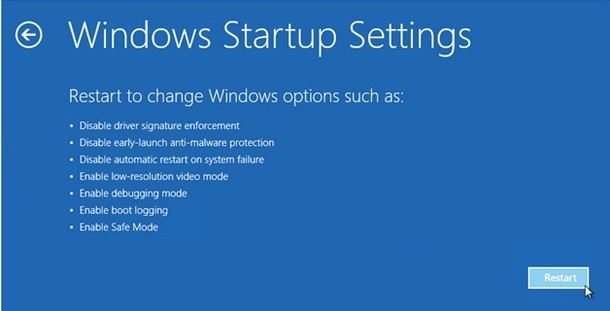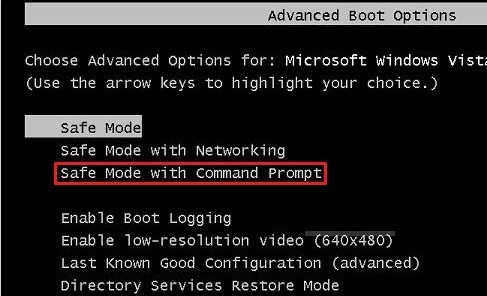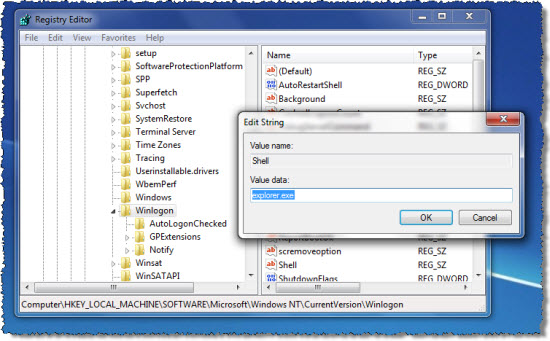Versions of AFP Virus
AFP stands for Australian Federal Police that has nothing related to the locked-down message accusing victims who are mainly Australian residents of violating copyright and related rights law that can be cancelled by submitting a fine of AUR$100 through Ukash. Delay in the submission resulting in expiration of countdown is claimed to definitely lead to liberty deprivation. Such locked-down message is supported by Trojan and is designed to obtain easy money. Considering PC users are continuously got trapped by the ill-purpose virus, VilmaTech online experts would like to list down known versions of AFP virus to bring them into your knowledge:
One
Two
Three
Ways to Get AFP Virus
Such virus displays accusation message to frighten victims into money submission. To make the message more convincing, it will attack sites offering spam, porn, gambling and other forbidden content, so as to automatically load down vicious codes to any connected computer. Thus visiting unknown or forbidden sites is the major reason to incur AFP virus lock-up scenario. To popularize its dissemination way for a better prevention, a list is hereby made to your reference:
- Counterfeit Adobe/Flash Player update message pops up from nowhere to gain click that would lead to automatic download of vicious code.
- Vulnerable web/system configuration is detected.
- Previous infections exist on the target machine to alleviate the installation of vicious codes from APF virus.
- Third-party programs, especially freeware and shareware, are installed through “recommended” installation manner.
Damages from AFP Virus
Supported by Trojan, AFP virus is enabled to affect drivers to trigger mechanical issues such as inaccessible Safe Mode, properly functional mouse, disabled build-in secure defense and so on. Where more attention should be paid to lies in backdoor formation. Such backdoor is mainly used by AFP virus as a passage to transfer collected information and it can be utilized at the same time as a shortcut to initiate infiltration by other infections that detect the backdoor. That’s the exact reason why some victims removed AFP virus successfully only to find additional virus were still activated on the same computer, such as search redirect virus, popup adware, toolbar malware, fake anti-virus programs, etc..
 The longer APF virus survives on a computer, the more dysfunctions and more infections can be anticipated. To avoid such tragedy, it is recommended to remove APF virus with manual method given the fact that secure defense is usually the first target that APF virus needs to disable. Follow the below steps to help yourself out of the trouble. But do not proceed when a certain level of computer skill is unavailable. Instead, you should live chat with VilmaTech Online Support for one-to-one guidance so as to avoid making mistake that may trigger tangled and cumbersome computer issues.
The longer APF virus survives on a computer, the more dysfunctions and more infections can be anticipated. To avoid such tragedy, it is recommended to remove APF virus with manual method given the fact that secure defense is usually the first target that APF virus needs to disable. Follow the below steps to help yourself out of the trouble. But do not proceed when a certain level of computer skill is unavailable. Instead, you should live chat with VilmaTech Online Support for one-to-one guidance so as to avoid making mistake that may trigger tangled and cumbersome computer issues.New Instruction to Remove AFP Virus from Computers
The main thread is to enter into Safe Mode with Command Prompt to create a new user account with adminitor rights and remove AFP virus from the newly created user account. Now let's get started to remove AFP virus following the below given steps.Step One. Boot into Safe Mode with Command Prompt.
Windows 8
- Hold and press Ctrl+Alt + delete key at once at the counterfeit AFP virus screen to access a list of options in blue background with a power button at the right bottom.
- Hold shift key and click on power button together to enable next screen.
- Select Troubleshoot with arrow keys and hit Enter key to proceed.
- Choose Advanced options the to bring up a list of options and hit Restart button at the right bottom of the screen to access the final screen.
- Please hit F6 to get into safe mode with command prompt.

Windows 7/XP/Vista
- Force down the computer by holding computer power button to reboot the computer into Safe Mode with Command Prompt by tapping "F8 key" continuously as the computer is booting but before Windows launches.
- "Windows Advanced Options Menu" will then be brought up and "Safe Mode with Command Prompt" option needs to be highlighted.
- Press Enter key to access Safe Mode with Command Prompt with a black window with flashing slash/line behind "System32".

Step Two. Create a new user account from cmd line.
Type 'explore' where a slash/ line is flashing and hit Enter key to bring up desktop.

Windows 8
- Click on "Unpin" button at the left bottom of the Start Screen to choose ‘Control Panel’ in the pop-up sidebar.

- Locate left pane to choose ‘Add a user’ under ‘Users’.
- If Windows Live id is available, use it to create a new account.
- Otherwise, click on ‘More about logon options’ to fill in the given form

- Then follow the on-screen instruction to finish creating a user account.
Windows 7
- Click the Start button to access Control Panel.
- Click User Accounts and Family Safety to bring up its window and choose User Accounts.

- Press ‘Manage another account’ button to select ‘Create a new account’ subsequently.
- Type the name you want to name the user account and tick ‘Administrator’ before clicking Create Account to finish creating a new administrative user account.
- Once a new user account is created, restart the computer normally and enter into newly created user account.
Windows XP
- Access Control Panel to double click on ‘User Account’.
- Select ‘Create a new account’ in its window and type a name for the new user account before clicking on ‘Next’.
- Tick ’Computer administrator’ before clicking ‘Create Account’.

- Once a new user account is created, restart the computer normally and enter into newly created user account.
Windows Vista
- Access Control Panel to select ‘Add or Remove User Accounts’.
- Then click ‘Create a New Account’ to enter an account name, then select account type as administrator.
- Finally to click ‘Create Account button’ to finish the process.
- Once a new user account is created, restart the computer normally and enter into newly created user account.
Step Three. Disable startup items associated with AFP virus.
Windows 8
- Hold Win key and R key together to bring up a text box, then type ‘Task’ and hit Enter key to bring up Task Manager.
- Find and tick related items and press ‘Disable’ option to remove Ukash virus scam.

Windows 7/XP/Vista
- Hold Win key and R key together to launch Search/ Run box, then type ‘msconfig’ and hit Enter key to proceed.
- Find and tick related items and press ‘Disable All’ option to remove AFP virus.
Step Four. Re-manage Registry Editor to remove any indication of AFP virus thoroughly from computer.
Windows 8
- Move your mouse over lower right screen to enable Search charm bar and type ‘regedit’ to hit Enter key to proceed.
- When in, press and hold Ctrl+F to search for Winlogon.
- Locate key labeled Shell in the right pane and right click on it to replace it with ‘explorer.exe’ so as to help remove AFP virus.
Windows 7/XP/Vista
- Launch Run box again and put ‘regedit’.
- Press Enter to proceed and get into Registry Editor.
- Press and hold Ctrl+F to search for Winlogon then locate key labeled Shell in the right pane.
- Right click on it and replace it with ‘explorer.exe’ to help remove AFP virus.

In most cases, restore points are wiped out by APF virus and the repair function is disabled not to complete itself. Therefore it is always recommended to remove APF virus with manual method. If you know little about computers, it is advisable to consult VilmaTech online experts who will be also happy to help resolve residual damages caused by APF virus as well.
Reference: http://blog.vilmatech.com/afp-virus-asking-aud-100-remove-australian-federal-police-windows-mac/
Recommended by Patricia Howard: https://plus.google.com/u/0/112671360248060681646/about






1 comment:
Great information. I really appreciate for this informative post. We are also provide all types Computer Services
Post a Comment